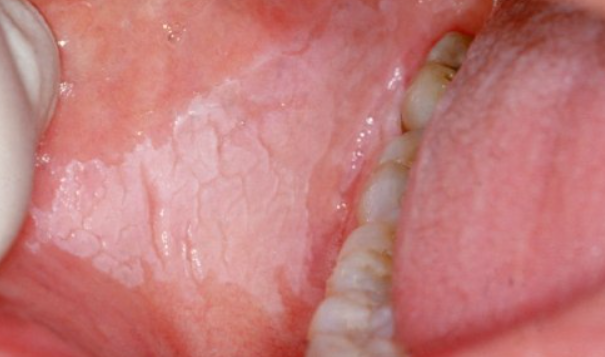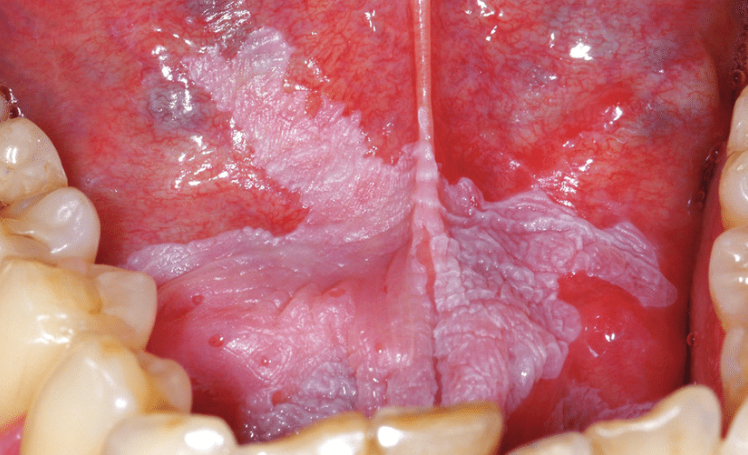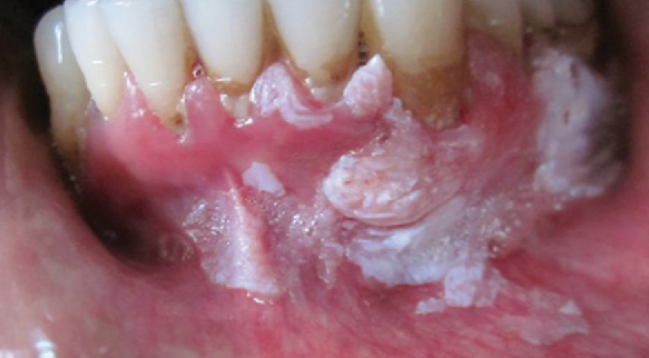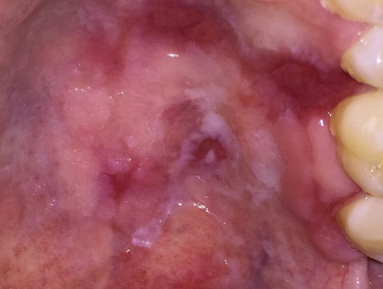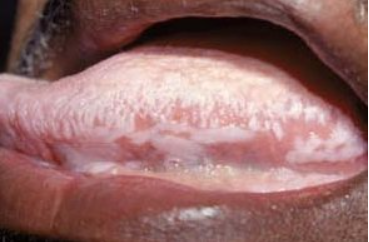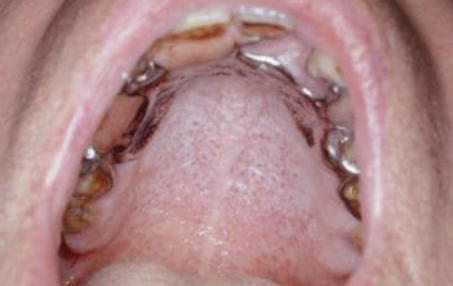Leukoplakia is a dystrophic change of the oral mucosa accompanied by varying degrees of epithelial hyperkeratosis and is classified as a precancerous condition. ICD-10 Code: K13.2
Leukoplakia most often develops between the ages of 40 and 70. Men are affected twice as often as women. It is one of the most common precancerous lesions of the oral cavity, observed in 0.2-4.9% of the population.
Tobacco use plays an important role in its pathogenesis (80-90% of patients are smokers). There is a synergistic effect with alcohol consumption. Chronic traumatization of the mucous membrane by dentures and sharp edges of teeth is also an important factor.
The role of Sanguinaria extracts, present in some toothpastes and mouthwashes, has been studied. Since leukoplakia often coexists with Candida fungal infection, the possible effect of such infection on malignant transformation has been studied. Certain fungal strains have been found to produce nitrosamine, a known carcinogen.
The involvement of Epstein-Barr virus in disease development is not proven, but human papillomaviruses (HPV-16 and 18) may in some cases contribute to the development of leukoplakia and its malignant transformation.
Flat type
Verrucous type
Erythroleukoplakia
Hairy Leukoplakia
Nicotine stomatitis
- Psoriasis
- Lupus erythematosus
- Lichen planus
- Candidiasis
- White sponge nevus
- Secondary syphilis
- Elimination of traumatizing factors in the oral cavity and smoking.
- Surgical excision, cryotherapy, laser ablation are indicated.
- Topical corticosteroids are also prescribed, such as clobetasol ointment, applied topically 3 times/day for the first month, 2 times/day for the second month, and 1 time/day for the third month.
- Methods of combined topical treatment with retinoids in combination with interferon administration have also been described.
- Phototherapy.
Prognosis: Squamous cell carcinoma develops in 2-4% of cases.

